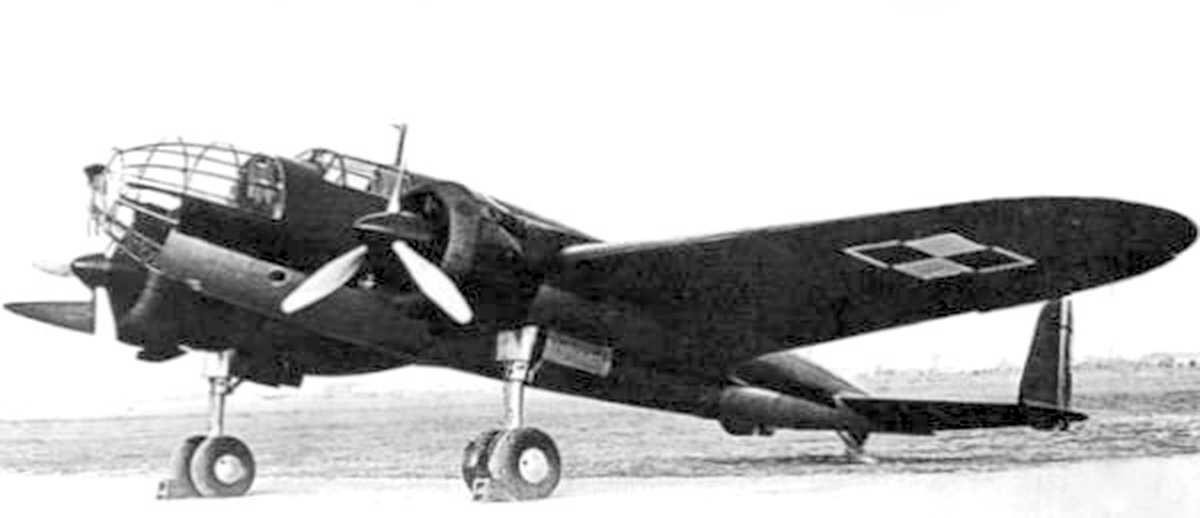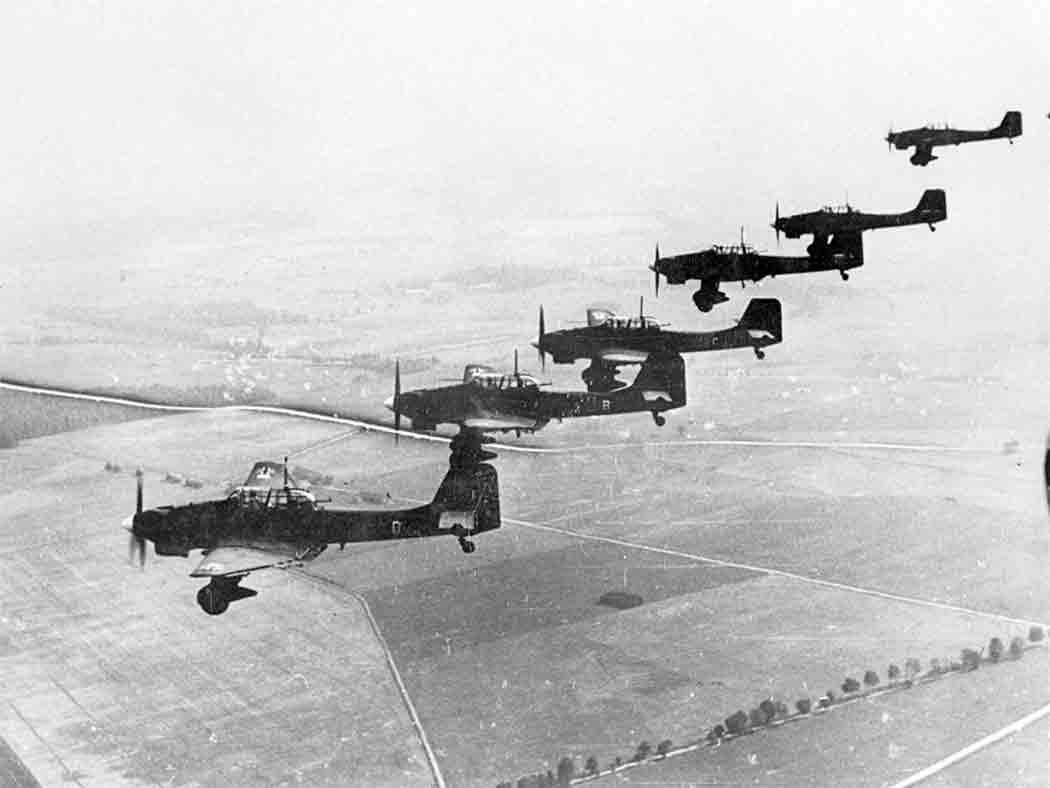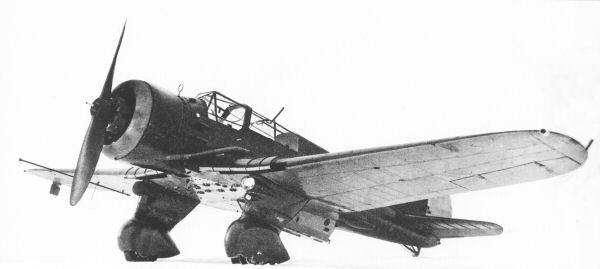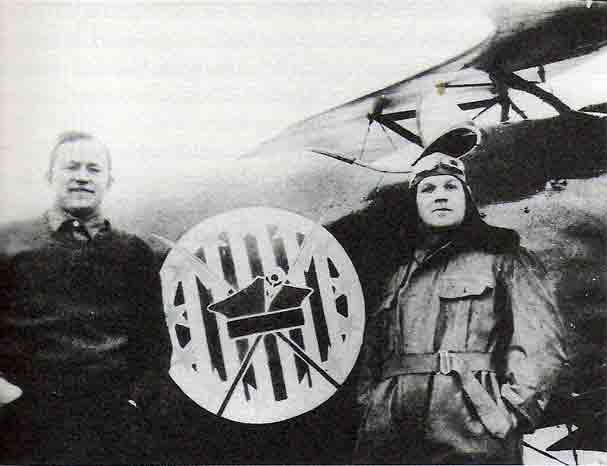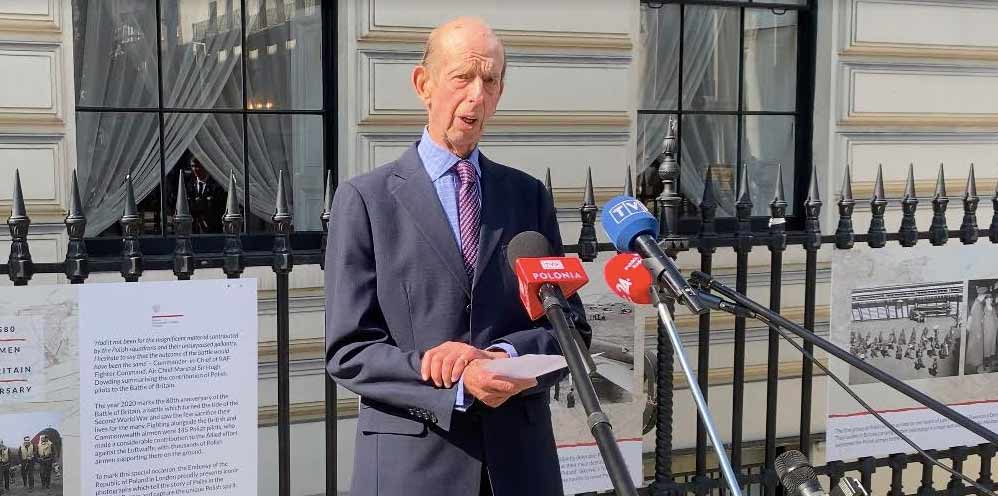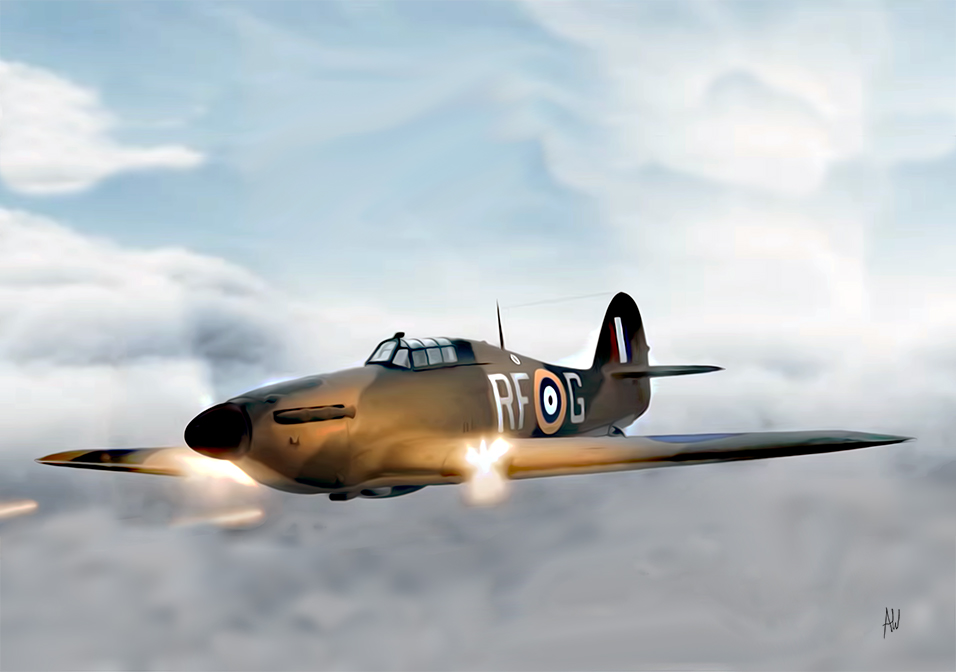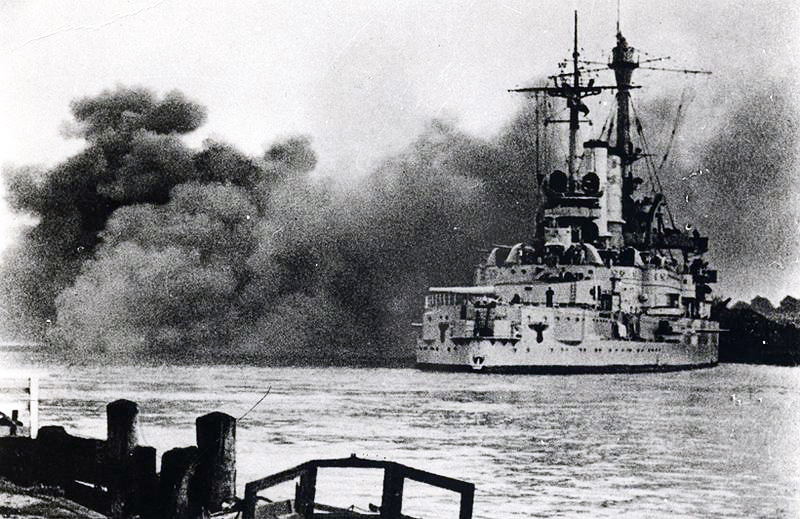September 1 is a significant date in Polish and, indeed, world history. Although the occasion of the official launch of the re-born Kuryer Polski in 2020 will hopefully prove significant eventually, it is the memory of 1939 that is intrinsically coupled with this day in the mind of every Pole. It is the day the Second World War started with numerous German attacks on Polish-held territory.
Hitler’s orders for operation Fall Weiß (Plan White) called for an attack on Poland on 26 August, but the short delay was due to the signing of the Agreement of Mutual Assistance between the UK and Poland in London on August 25, as it turned out, to no real effect.
A lot has already been written about the events that led to and followed the outbreak of the war and it is not my intent to repeat all the well-known facts and high-level accounts. As I have a longstanding interest in aviation and its history, my take on the events of 1939 will be focused on that particular topic, particularly the situation the Polish pilots found themselves in.
This year, we commemorate the 81st anniversary of the 1939 Defense War. Left isolated, abandoned by its allies France and Great Britain, surrounded by enemies on all four sides, Poland had to face the aggression of three attackers: Germany, the Soviet Union, and Slovakia, all by itself.
The Poles were among the first to face the German Luftwaffe, which was probably the most powerful air force in the world. The Luftwaffe unquestionably surpassed the Polish air force in almost every respect - technically, organizationally, and quantitatively. However, the training, bravery and spirit of Polish pilots made the September campaign not an easy trip for the Luftwaffe.
The State of Polish Aviation
World War II was the first major conflict in history in which aviation had not only been an auxiliary force, but a decisive factor in many cases. Achieving air superiority had become crucial to the success of the ground-based operations. Those who commanded the control of the skies could secure victories on the ground.

Sadly, the Polish military aviation suffered from an almost catastrophic lack of investment in the years before the war, and - tragically - from a general attitude of disregard among the top echelons of the military commanders, such as the Supreme Commander Piłsudski, and marshal Rydz-Śmigły, who collectively developed their contempt of military aviation (and also tanks) based on their - gravely mistaken - lessons learned and conclusions drawn from the 1920 war with the Soviet Russia. The victory over the Soviets, paradoxically, led to the subsequent idealization of the role of infantry and cavalry, to the neglect of the modern types of armed forces such as aviation and motorized armor, and to their tactical misapplication - with grave consequences in 1939.
The Polish military aviation underwent a late-attempt modernization period under general Sikorski [10], but it only started in earnest in 1935, after Piłsudski died. It was the same year in which Nazi leader Adolf Hitler signed a secret decree authorizing the founding of the Reich Luftwaffe as a third German military service to join the army (Wehrmacht) and navy (Kriegsmarine). The arms race was on in earnest and Poland was in no position to be able to catch up with Germany economically.
Yet, although much has been said that Poland was essentially unprepared for the war in 1939, it is perhaps worth observing that hardly anybody was faring much better in terms of readiness at the time. Even the militaries considered the strongest in the world, such as the French and the British, were not up to the new challenges, even several months later (the fall of Allies in Belgium and France to wit).
In light of the analysis by Tymoteusz Pawłowski, a historian at the Warsaw University, it appears that the Polish military was, in fact, at the forefront of strategic, organizational, and technical thinking just before the war and compared favorably with the world’s biggest military powers at the time. The tragedy was that it had to fight against the German war machinery that introduced completely new approaches to tactics and strategy the rest of the world could not catch up to for the next several years. In this environment, the 1920 tactics that the Polish leadership was clinging onto would not apply any more, and only exacerbated the deficiencies.
By some accounts, the preparations for the war with Germany were already under way within the Polish air force in the Fall of 1938, directly in the aftermath of the, so called, Munich Crisis, which made obvious to everyone, except maybe the then UK Prime Minister Neville Chamberlain, that war with Germany was all but inevitable. The threat of an invasion was becoming real, the only question was when it would come.
Although preparations for the war were being made, according to the scathing report by the Inspector of Air Defense and soon-to-be Chief Commander of Aviation and Air Defense general Józef Zając, issued in early 1939, the situation was dire:
“At present, the combat readiness of our aviation is insufficient from the point of view of the quality of its equipment. ... The state of combat readiness in terms of equipment not only will not be better, but also deteriorating.” [5]
The core aircraft comprising the Polish fighter aviation was the PZL P.11c, affectionately known as “Jedenastka” (the Eleven), the rest being old PZL P11.a, and an even older PZL P.7. The P.11 was an improvement over P.7, both all-metal fighter planes with a characteristic high-wing originally designed by Zygmunt Puławski (hence the wing is now called “Puławski Wing”), single radial engine, open cockpit, and fixed undercarriage, but it was already outdated in 1939. It initially entered service in 1935 and was a respectable, even innovative fighter for its time, but by 1939 many foreign, most notably German, as well as even domestic designs had far overtaken it. The tragic death of Puławski in 1931 did not stop the design and construction, but certainly hampered the development of this line of aircraft.
Germans began regular overflights of the Polish territory in the Spring of 1939 - months before the outbreak of the war. They were flying reconnaissance flights all over Poland, with a particular emphasis on the areas near the border. Intercepts were extremely difficult, however, partly because radar was not yet available and Poland was relying on ground-based observers, and partly due to the overwhelming technical advantage of the enemy and advanced age of the Polish fighter planes. The pilots in the air were directed at the invading enemy planes by radio but not all Polish aircraft were equipped with radio stations. These attempted intercepts in the early 1939 were fruitless and frustrating for the pilots.
In the words of the Polish lieutenant Stanisław Skalski - the first fighter ace of WWII, and later a hero of the Battle of Britain:
The Luftwaffe was then undoubtedly the strongest aviation power in the world. The forces used in Poland surpassed those of the Polish military eight times only in terms of numbers. However, this was not the most important thing. The quality of the equipment was the enemy's advantage that made the difference. We fought with obsolete equipment of little combat value. We, the fighter pilots, flew airplanes with half the speed and more than half as much firepower as the enemy fighter planes. ... But why speak of fighters, when enemy bombers that we were supposed to chase turned out to be faster than us." [1]
To illustrate the German technological advantage, their reconnaissance aircraft (e.g. the two-engine Dornier Do-215) could easily outclimb Polish fighters to altitudes of 9,000 m (30,000 ft), while the operational ceiling of the P.11c was 8,000 m (24,000 ft). The German fighter aircraft, most notably the Messerschmitt Bf.109, not only had the ceiling of 12,000 m (39,000 ft), but also the maximum speed of 520 km/h (320 mph), compared to the 300 km/h (186 mph) of the P.11c – hence, it was almost twice as fast!
In the history of air combat of both world wars, there was probably no more paradoxical juxtaposition than ‘Jedenastka’ and Messerschmitt. [1]
wrote Skalski later.
As far as bombers, the Polish aircraft factory PZL (Państwowe Zakłady Lotnicze - State Aviation Works) designed a modern twin-engine medium bomber, the PZL.37 Łoś (Moose). The Łoś had a respectable bomb payload of 2,580 kg (5,688 lbs) and a top speed of 439 km/h (273 mph). Yes, Łoś, the bomber, was much faster than the P.11c fighters that were supposed to intercept enemy bombers (like Heinkel 111), as was amply demonstrated in training exercises before the war. This was a result of the neglect of aviation in general, and fighter aviation in particular by the Polish leadership. Only about 100 Łoś bombers had been delivered before the war, anyway, and their combat use proved limited and costly without air cover by modern fighters, and due to outmoded tactics.
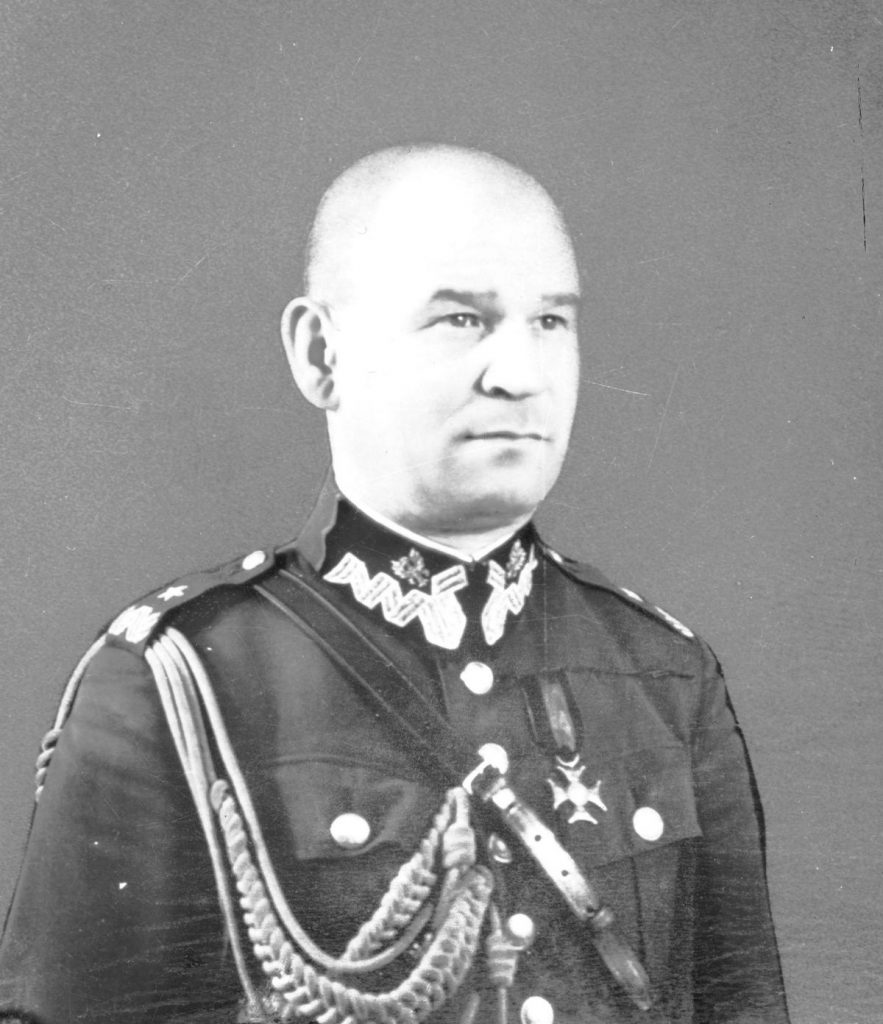
The new commanders at the helm of the Polish Air Force, headed by gen. Zając since March 1939, found themselves in an unenviable position. Relations with the Germans were becoming more and more tense, the war was in the air, and they had to acquire as many modern aircraft as possible at an express pace to make up for years of neglect in just a few months and on a very limited budget.
In the spring of 1939, the new authorities of the Aviation Department began frantically modernizing the Polish air fleet. Because of the high political tensions and pressure, they did not avoid mistakes though. They bought shoddy equipment, such as the hopelessly ineffective British Fairey Battle (never delivered, however), and sold their own more modern machines, like PZL.43 Czajka (sold to Bulgaria, an Axis country) and P.24 (sold to neutral Turkey, friendly Romania, and Greece), while pinning their hope on a really modern PZL.50 Jastrząb (Hawk), of which only a single prototype flew in 1939, unfortunately. However, they did manage to acquire a few planes that could possibly change the fate of air combat in September 1939.
Most notably, Poland ordered 160 French MS-406s and 10 British Hawker Hurricane fighters (the latter made famous during the subsequent Battle of Britain), but it was a classic case of “too little, too late.” The aircraft were not delivered before the outbreak of the war. The Hurricanes were on their way on a ship near Denmark when the war broke out on September 1st. They were then re-routed to the friendly Romanian port of Constanța, then ultimately to Turkey, thus never reaching the intended destination.
On top of having superior equipment, the Luftwaffe had developed and perfected novel combat techniques during the Spanish Civil War. This did not go unnoticed by the Polish high command and Polish fighter squadrons actively practiced dogfights - both individual and formation - in their venerable P.11c fighters already in September 1938. While practicing, one of the sides would adopt German tactics known from intelligence information - a novel concept at the time and an excellent preparation for actual combat. It proved essential, but what the pilots were lacking was not the skill, but the equipment that could match the capabilities of the enemy aircraft. This proved to be an insurmountable obstacle.
German Invasion
At the beginning of the invasion of Poland, almost all the Polish combat aircraft had been dispersed to secondary airfields, contrary to a commonly-held belief, based on German propaganda, that they had all been destroyed by bombing at their regular air bases. In fact, on August 31, most air units were moved to the field airports prepared in advance in order to avoid the destruction of planes at the regular peacetime airports, the location of which was well known to the German intelligence. This action saved most of the equipment, since permanent military airfields were being bombed from the early morning of September 1.
Just as dawn on September 1 was approaching, the Luftwaffe formations took off from numerous fields near the German, Czech, and Slovak borders. The first bombs fell in the early hours of the morning, first onto a bridge in Tczew, as well as on purely civilian targets such as the hospital in Wieluń near the Polish-German border. The savage bombardment of Polish cities continued unabated for a full month, although it must be said that the first massive Luftwaffe attempt at bombarding Warsaw in the morning of September 1 was skillfully repelled by the Polish fighters of the, so called, Pursuit Brigade dedicated to the defense of the skies above the capital.
On September 1, 1939, the Polish air force had 392 combat aircraft and 102 auxiliary aircraft against the veritable armada of Germany's 3,162 combat aircraft, and over 1,000 reserves: hardly an equal match, as the overall numbers stack roughly 10-to-1. Yet, despite flying obsolete equipment and being heavily outnumbered, Polish fighters shot down over 170 German aircraft between September 1 and 17.
Skalski recalls:
"Some of the [German] pilots I encountered were obviously first class, others appeared to lack any real fighter flying technique, the result it would seem, of insufficient instruction. The enemy showed a strange reluctance for combat except when in overwhelming numbers." [2]
Speaking of the "valour" of the German pilots, Skalski had this to say:
"I myself have seen them to make callous attacks on peasants working in the fields, people walking in the village streets, refugees, etc. "
"While we were tending their wounded they were shooting down our airmen attempting to escape by parachute. In fact, they seemed to lack any moral scruples". [2]
During the campaign, the Polish pilots were heroically winning the air battles, but lacking proper ground support. Already after the first week of hostilities, roads were congested with civilian refugees and retreating military units alike, making it difficult for the ground support to follow their squadrons to the temporary fields where the aircraft were being moved to by air. Further, the situation was exacerbated by an almost constant lack of high-octane aviation fuel, not to mention the availability of spare parts. There simply weren’t enough reserves available. There were no spare aircraft whatsoever. Finally, the coordination between the air force and the troops on the ground was nonexistent.
Skalski writes:
"Everyone was shooting at us: the Germans and our own [troops]. Ours often more accurately. ... Almost every [plane] was considered German. [...] The fear of anything aviation-related created an atmosphere in which all planes were fired at, just in case, regardless of their markings." [1]
Slovak Invasion
A relatively little known fact is that, along with Germans, and likewise without officially declaring war, Slovakia attacked Poland on September 1, 1939. The puppet Slovak state was installed in March 1939 after Germany annexed Czechoslovakia and it clearly remained under heavy German political and military influence. Slovakia not only hosted Luftwaffe aircraft on its territory prior to and during the invasion of Poland, but also aided Nazi forces both on the ground and in the air. Poland was thus surrounded on three sides either by German proper, or German-controlled territory.
The Polish aviation operations in the Slovak theatre were limited mostly to reconnaissance and light bombardment. The first, rather symbolic, attack on a German military column marching inside Slovak territory was undertaken by the Polish P.23B Karaś light bomber already on September 1.
In the end, a coordinated bombing operation on Slovak territory was never authorized or carried out, primarily due to the lack of a state of war between the Polish Republic and the Slovak State.
Overall, as a result of the Polish-Slovak conflict, one aircraft was lost on each side. The Polish air force lost an R-XIIID Lublin reconnaissance plane and two aviators, while the Slovak side lost an Avia B.534 aircraft and its pilot.
In contrast with the above, it may be of interest that after the annexation of Czechoslovakia, many Czech and Slovak aviators who did not accept the terms of the appeasement made their way to Poland and voluntarily entered the Polish air force, hoping to help with Poland's defense.
The Czechoslovak pilots who fought on Polish side flew only the older PWS-26, RWD-8 and Potez XXV multi-role reconnaissance aircraft. Not all volunteers could take an active part in combat activities in Poland, but those that did reflect positively on the Polish-Czechoslovak relations.
Russian Invasion
By mid-September, the Polish defense was already reduced to random efforts by isolated troop formations.
On September 17, 1939, another blow fell: powerful Soviet Red Army forces entered the territory of Poland from the East, thus fulfilling the Soviet commitment to the German-Russian pact and its secret clause concerning the partition of Poland, as well as Stalin’s long standing ambitions of expanding the Russian territory to the West. This happened exactly one day after the Soviet-Japanese ceasefire in the Far East that relieved the Soviets of concerns of fighting two wars. Poland thus was almost completely surrounded by enemy armies.
The sky over the Polish Eastern borderlands thundered with the roar of the engines of hundreds of Bolshevik airplanes attacking military and civil targets almost with impunity. Only a few Polish fighters could take part in the defense.
Skalski by then was close to the Romanian border, traveling by car with a group of fellow pilots on a mission to retrieve the British and French aircraft supposedly about to arrive in Constanța. He described an encounter with a formation of three Soviet tanks - part of the invading Russian army from the East - whose commander reportedly exclaimed "We're with you! We go beat the German together!" Luckily, Skalski and his group were somehow inexplicably allowed to proceed. If captured, they could have shared the fate of over 20,000 imprisoned Polish officers who were shot by the Soviets in the Spring of 1940 in the "Katyń Massacre".
The Soviets deployed a powerful air force of over 3,000 aircraft against the Republic of Poland. Poles could oppose them with only 46 PZL P.11 and 8 PZL P.7 fighters left over from the so called Pursuit Brigade, which was shattered in the struggle with the Luftwaffe over Warsaw.
In total, during a few weeks of fighting over the Eastern Borderlands, Soviet airmen made 5-7 thousand sorties. In the air, they destroyed 4 Polish machines, and further 8 Polish planes fell prey to the Soviet anti-aircraft artillery. In turn, Russian losses, according to Mirosław Wawrzyński, an expert on the subject, amounted to 15-25 aircraft. These are estimates, because the Soviets themselves in official documents stated that their air force over Poland ... did not suffer any damage.[6]
The Aftermath
In the end, part of the Polish Air Force was destroyed in the campaign. The surviving aircraft were either captured or withdrawn to Romania, Hungary, Lithuania, Latvia, Slovenia, or Sweden, whose air forces subsequently employed these aircraft for their own purposes.
A great number of Polish pilots and aircrew managed to escape to France and then to Britain, where they played a significant part in the defense of the United Kingdom during the Battle of Britain a year later.
The air war with Germany was lost due to German technological advantage and overwhelming enemy numbers on the one hand, and lack of preparation and lack of supplies on the Polish side, on the other. Flying and fighting skills could not compensate for that.
After the Red Army entered Polish territory on September 17, there were basically no conditions for effective further defense any more. Nevertheless, even after the Polish aviation was essentially rendered non-existent after September 17, thanks to the fortitude of an ordinary soldier and the sense of duty of many commanders, the fighting in Poland lasted until the first days of October.
The heroic efforts by Polish pilots and aviation personnel helped defend Poland from the triple German, Russian, and Slovak invasion and, at least partly, prevented some of the relentless bombardments of Polish cities. The few brave pilots on their outdated machines could not single-handedly turn back the tide of the war, but they fought as hard and as courageously as they could, against all the odds, and despite all the obstacles. We owe them a debt of gratitude.
Perhaps a different and more nuanced conclusion must be drawn about those who were responsible for the preparations of the Polish air force in years before the war. Incompetence, missed opportunities, wrong decisions, outdated tactics, misunderstanding of the role of aviation in modern warfare at the highest ranks, as well as political interference and external meddling, overall international situation, and lack of funds and industrial resources all conspired against the efforts to modernize the Polish military aviation when it was in greatest need.
This article, specifically for Kuryer Polski, was being written by the author in August 2020, simultaneously in both Polish and English language versions.
Andrew is a lifelong aviation enthusiast, a licensed and instrument-rated private pilot and airplane owner, with keen interest in the history of aviation in general, and Polish wings in particular.




